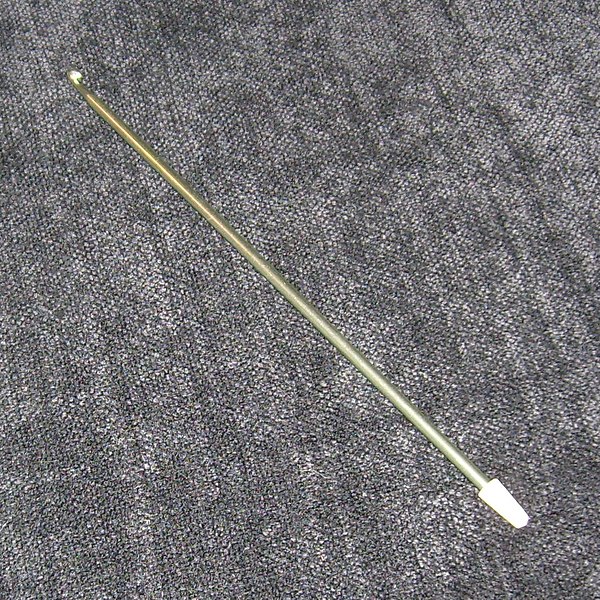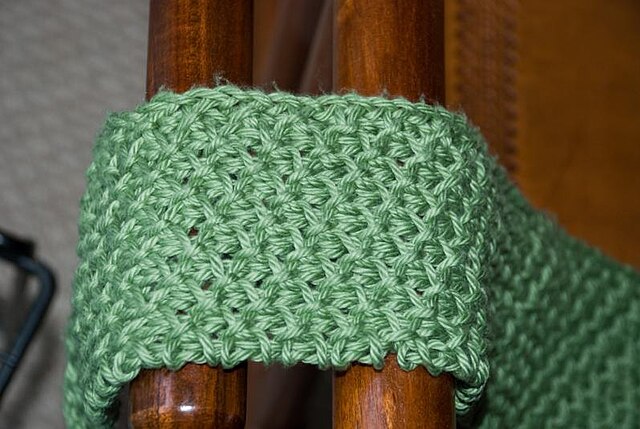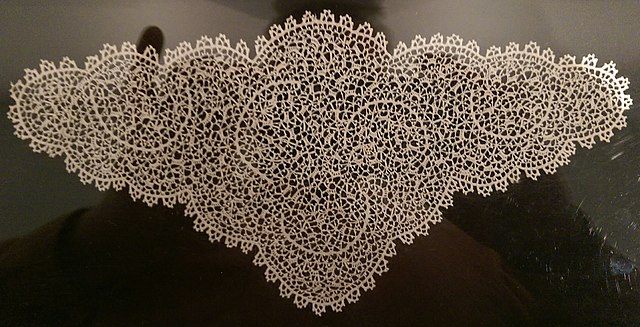Tunisian crochet or Afghan crochet is a type of crochet that uses an elongated hook, often with a stopper on the handle end, called an Afghan hook. It is sometimes considered to be a mixture of crocheting and knitting. As such, some techniques used in knitting are also applicable in Tunisian crochet. One example is the intarsia method.
a Tunisian crochet hook.
Tunisian crochet pillow.
Tunisian crochet smock stitch.
Crochet is a process of creating textiles by using a crochet hook to interlock loops of yarn, thread, or strands of other materials. The name is derived from the French term croc, which means 'hook'. Hooks can be made from a variety of materials, such as metal, wood, bamboo, bone or even plastic. The key difference between crochet and knitting, beyond the implements used for their production, is that each stitch in crochet is completed before the next one is begun, while knitting keeps many stitches open at a time. Some variant forms of crochet, such as Tunisian crochet and broomstick lace, do keep multiple crochet stitches open at a time.
19th century crochet from Orvieto, Italy
Detail of a Portuguese crocheted tablecloth, about 1970
Irish crochet lace, late 19th century. The design of this example is closely based on Flemish needle lace of the 17th century.
Examples of crocheted articles of clothing made specifically for a cat.







